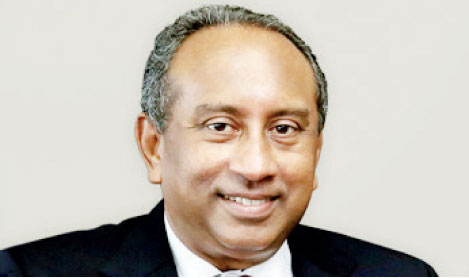Saturday Jan 11, 2025
Saturday Jan 11, 2025
Thursday, 28 May 2015 02:00 - - {{hitsCtrl.values.hits}}

Bank of Ceylon Chairman Ronald C. Perera
Having concluded its 75th anniversary year with a commendable achievement of Rs.20.3 billion PBT, Bank of Ceylon has reported Rs.4.4 billion PBT for the 1Q 2015, achieving 15% growth over 1Q of the previous year.
Profit After Tax (PAT) stood at Rs.3billion, resulting in 15% growth.
The Group reported Rs.4.3 billion PBT, resulting in a 10% growth over the corresponding period of the previous year and the bank dominates the results of the Group, accounting for 96% of earnings and 97% of the Group’s assets.
PBT has mainly accelerated due to increased net interest income and fee income. The bank has been able to achieve lower interest expenses through improved CASA mix (Current Account and Savings Account to total deposits) resulting in a 34% increase in net interest income over 1Q 2014.Net fee and commission income have also increased by 25% to Rs. 2.1 billion, contributing 14% to total operating income.
Impairment charge on loans and advances has increased by 17% to Rs.3.9 billion, mainly due to increase in individual impairment compared to that of the corresponding period of 2014. However, collective impairment provision showed a marginal increase of 6% reflecting quality of the portfolio and prudential methods adopted in credit management.
Preserving its position as the first domestic bank to achieve a trillion assets balance sheet, the bank’s assets grew by 5% to Rs.1.4trillion as of end March 2015.Loans and advances accounted for 58% of the bank’s assets base and gross loans stood at Rs.845.5 billion as at end 1Q 2015 and showed a marginal growth of 9% recovering from the slower credit growth that prevailed during last year.
Deposits accounted for 70% of the bank’s liabilities as at the end of 1Q 2015 and showed a slight decrease compared to end 2014.
As at end of 1Q 2015 the bank’s Return on Average Assets (ROAA) ratio stood at 1.3% and Return on Average Equity (ROAE) ratio stood at 15.7% indicating slight dip compared to end 2014 mainly due to increased assets base and the Rs. 5 billion capital infusion made in December 2014. Meanwhile, cost to income ratio showed an improvement from 42% to 39% in line with the improved operational efficiencies.
The bank’s domestic liquid asset ratio was 26.6% as at the end of 1Q 2015 while the offshore liquid asset ratio was 31.7%. Both ratios stand well above the Central Bank’s required benchmark of 20%.The bank managed to maintain a better trade-off between liquidity and interest earning assets continuously under the excess liquidity scenario which prevailed last year.
Capital infusion of Rs. 5 billion and issue of Rs.8 billion debentures helped to improve Tier I and Tier II Capital Adequacy Ratios (CAR) as of end 2014. The bank managed to sustain CAR by maintaining Tier I at 8.6% and Tier II at 12.4% levels against the Central Bank’s minimum requirements of 5% and 10% respectively.
In view of the promising results and the strong fundamentals, it is anticipated that the bank will be able to sustain the ratings it currently possesses. While it deploys strategies to implement its Corporate Plan for 2015 by capturing the growing in credit demand, it will continue to invest in developing human capital and technological infrastructure to enhance robustness, efficiency and effectiveness in all areas of the bank.